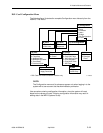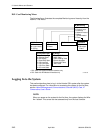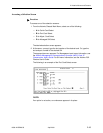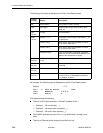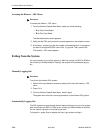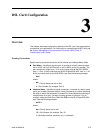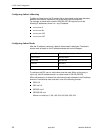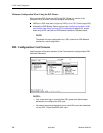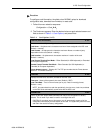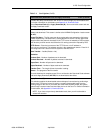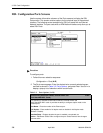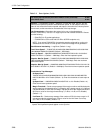
3. DSL Card Configuration
8000-A2-GB26-50 April 2001
3-3
Domain Types
To monitor and control the overall system, the Hotwire Access Network should be
partitioned into two distinct domains:
Service domain(s) (Layer 2, MAC Bridging)
Management domain (Layer 3, IP Routing)
Service Domain
A service (or data) domain is comprised of all clients and servers (grouped
physically or virtually) that communicate across a common WAN or LAN
connection for Internet or intranet access. This is the Layer 2 bridging domain of
the NSP. The Access Node cards and the Service Nodes are the Hotwire
components of this domain. The service domain also encompasses an NSP and
all end-user systems that subscribe to that NSP.
Management Domain
The primary function of the management domain is monitoring and configuring the
DSL cards and service domains served by the DSLAM. The management domain
should reside in a mutually exclusive domain from that of the service (data)
domain(s). The MCC card functions as a service router and is the primary tool for
configuring and diagnosing the management domain.
It is recommended that the management domain reside in a separate domain from
the service domain(s) for security purposes and to improve download
performance.
Minimum Configuration
The minimum configuration of the DSL port card differs, depending on the type of
SN used.
Minimum Configuration When Using the 5620, 6310, or 6350 SN
When using either the 5620, 6310, or 6350 SN, the DSL port card is in control of
the connection. At a minimum, you must configure the following:
VNIDs on a DSL card (see
Configuring VNID(s) on a DSL Card
on page 3-20)
The active VNID and the Next Hop Router on each DSL port/interface (see
Configuring the Active VNID and the Next Hop Router on each DSL
Port/Interface
on page 3-22) when using DHCP
Static users (see
Configuring Static Users
on page 3-23) if you have static
users on your network, fixed addresses, or subnets



